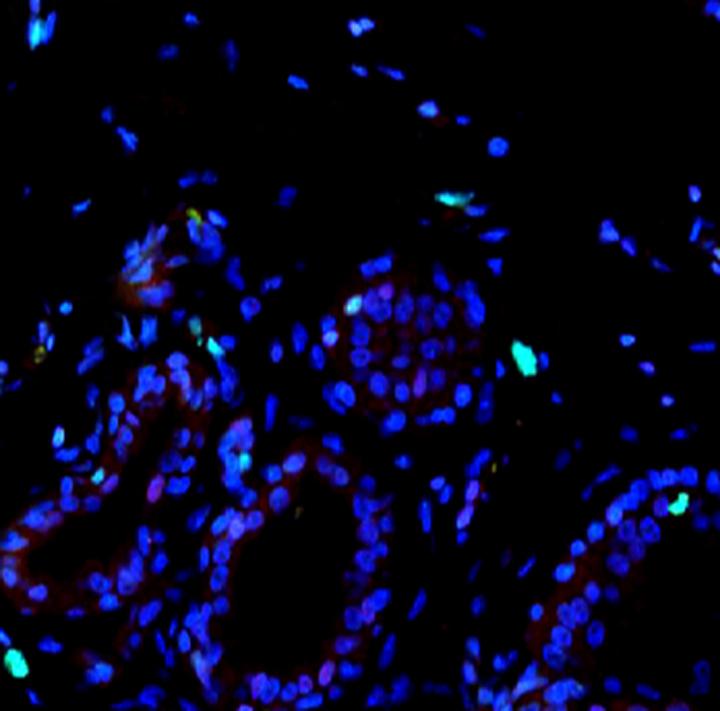Biomarker Predicts Breast Cancer Risk in Asymptomatic Women
By LabMedica International staff writers
Posted on 18 Apr 2016
A biomarker has been identified that may allow clinicians to predict the risk of an asymptomatic woman eventually developing breast cancer.Posted on 18 Apr 2016
To identify this disease indicator, investigators at Harvard Medical School studied the association between breast cancer risk and the frequency of mammary epithelial cells expressing the proteins p27 (Cyclin-dependent kinase inhibitor 1B), estrogen receptor (ER), and Ki67 (Marker of proliferation Ki-67) in normal breast tissue from 302 women (69 breast cancer cases, 233 controls) who had been initially diagnosed with benign breast disease.

In healthy breast tissue, the percentage of cells expressing molecular marker Ki67 (green) and p27 (red) was low (Photo courtesy of Sung Jin Huh, Harvard Medical School).
Immunofluorescence assays for p27, ER, and Ki67 were performed on tissue microarrays constructed from benign biopsies containing normal mammary epithelium and scored by computational image analysis.
Results revealed that the frequency of Ki67+ cells was positively associated with breast cancer risk among premenopausal women. Conversely, the frequency of ER+ or p27+ cells was inversely, but not significantly, associated with subsequent breast cancer risk. Notably, high Ki67+/low p27+ and high Ki67+/low ER+ cell frequencies were significantly associated with a five-fold higher risk of breast cancer compared with low Ki67+/low p27+ and low Ki67+/low ER+ cell frequencies, respectively, among premenopausal women.
This data suggests that the fraction of actively cycling cells in normal breast tissue may represent a marker for breast cancer risk assessment, which may therefore impact the frequency of screening procedures in at-risk women.
"Currently, we are not able to do a very good job at distinguishing women at high and low risk of breast cancer," said senior author Dr. Rulla Tamimi, associate professor of epidemiology at Harvard Medical School. "By identifying women at high risk of breast cancer, we can better develop individualized screening and also target risk reducing strategies."
The study was published in the April 1, 2016, issue of the journal Cancer Research.
Related Links:
Harvard Medical School








 (3) (1).png)




